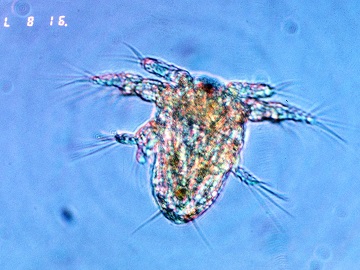Swimming in cool water may be invigorating for some, but for some tiny marine creatures it could be deadly. It’s tougher for small creatures to move through cold water than it is for larger creatures, making them easier prey. But at least some of the little guys have a way to compensate.
 Researchers at the University of Texas Marine Science Institute studied a type of marine creature known as a copepod. It senses the motion of approaching predators, giving it time to “hop” to safety.
Researchers at the University of Texas Marine Science Institute studied a type of marine creature known as a copepod. It senses the motion of approaching predators, giving it time to “hop” to safety.
These organisms are so small that they get sluggish when the water cools off. And cooler water undergoes a change in viscosity – it’s harder for small creatures to swim through, as though it suddenly turned to honey.
But field studies had shown that the copepods didn’t appear to be easier to catch when the water was cold than when it was warm. To find out why, researchers studied the motions of copepods in warm water, cool water, and warm water that was thickened a bit to simulate the cool water. They created 3-D images to see how the critters moved.
They found that the copepods changed their swimming style when the water got cool. Instead of flapping all of their “arms” at the same time, they moved them in sequence from front to back. That gave them extra momentum. But the copepods didn’t use that motion when swimming through the thickened warm water, suggesting that they were reacting to the cold.
Changing their swimming style may give them enough extra “kick” to keep them safe when the weather turns cold.
This episode of Science and the Sea was made possible by the Biological Oceanography program of the National Science Foundation.

